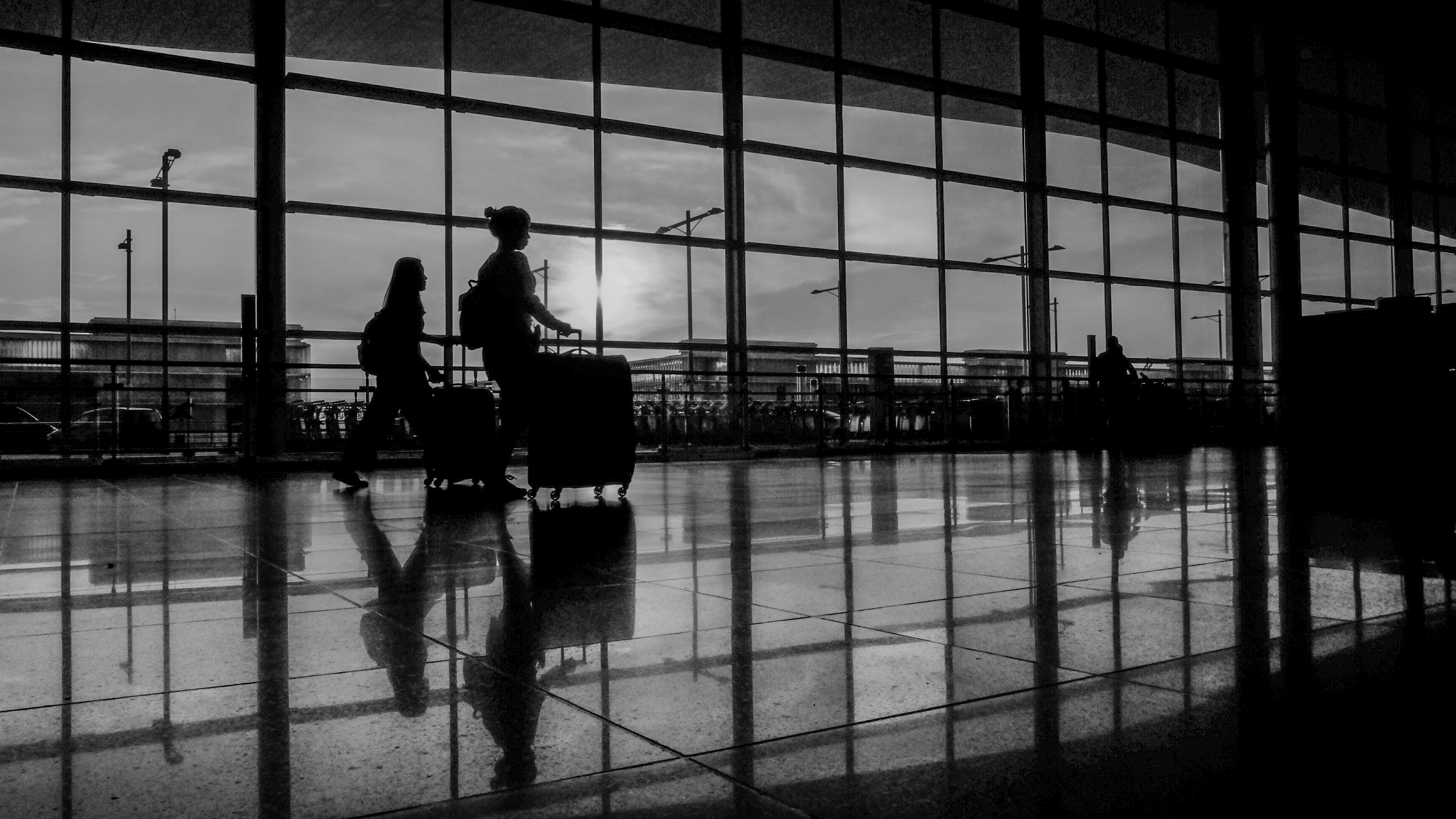Can flights be undelayed? Everything you need to know

Everyone has experienced the dreaded flight delay. But if you’ve ever wondered if a flight can be undelayed, you’re not alone in your confusion.
For busy business travelers, understanding what statuses like “undelayed” mean is essential to reducing your stress levels and avoiding hiccups in travel planning. In this guide, we’ll explore undelayed flights, how often they happen, and why they matter (especially for business trips). We’ll also explain how tools like Engine’s Traveler solution can help.
Why do airlines undelay flights?
While it may sound surprising if you’ve never had the experience, here are some of the real, practical reasons airlines reverse delays.
Air traffic control changes
Airlines can accelerate departure times if air traffic control opens up more clearance or cancels restrictions. For example, when a busy airport finishes maintenance ahead of schedule, ATC might lift a departure cap that lets flights take off sooner.
Aircraft swaps
Sometimes, airlines swap planes to match schedules better. If a faster-turnaround aircraft arrives ahead of time, the airline can undelay the flight, shaving off 15–30 minutes from previous estimates.
Improved weather conditions
Inclement weather, like snowstorms or excessive wind, can delay and even cancel flights. But if the weather clears up, crews can start boarding earlier, which allows the delay to be reversed. For example, a sudden break in a blizzard might pull back an anticipated hour-long delay to a shorter 15-minute hold.
What causes flight delays?
Understanding what causes delays will help you plan better and stay prepared for sudden schedule changes. It isn’t always easy to find out exactly why your flight was delayed, but here are some of the most common reasons.
Weather
Rain, snow, thunderstorms, or heavy winds can ground planes or slow down departures. In fact, weather is one of the most common causes of flight delays and cancellations. It often affects several flights and can have a ripple effect on the day’s schedule. And it’s not just severe storms that cause issues—fog and extreme heat are also culprits, and flights can get cancelled for rain that reduces visibility.
Airport construction
Runway closures or terminal construction can reduce an airport’s operations, which means fewer slots for arrivals and departures.
Inbound plane delays
If the aircraft for your flight arrives late for reasons like mechanical issues or a previous weather hold, your outbound flight will likely also be delayed.
Special events/VIP movements
Large sporting events, major conferences, or presidential/VIP travel can cause temporary airspace restrictions or increased traffic, sometimes resulting in delayed or canceled flights.
Ground stops
Sometimes, airports pause all takeoffs due to ground stops. These are runway closures, taxiway maintenance, staffing issues, or security restrictions that directly impact departing flights.
4 ways to anticipate flight delays
If you’re a frequent flyer, anticipating potential delays can save you hours of waiting (and a lot of stress).
1. Monitor weather conditions in advance
Check the forecast not just for your immediate locations but also for major hub airports your airline uses or for common flight corridors. Weather apps with aviation features can also be helpful, or you can take a quick look at the NOAA (National Oceanic and Atmospheric Administration) weather maps.
2. Stay informed on current events and travel alerts
Major events, air traffic control hour caps, and airport construction notices are posted on airline and FAA websites. The FAA’s National Airspace System Status page has real-time information on airport closures, ground stops, and delay programs. Following aviation news sources can also provide early warnings.
3. Track inbound aircraft
Plane-tracking apps can show whether your aircraft ended its last flight early or got stuck at another airport. They show real-time aircraft positions and historical flight paths, revealing if an aircraft was delayed in-flight on a previous leg. This gives you insight into possible hold-ups or changes that could result in an undelay.
Note: If you’re wondering what “delayed in flight” means, it’s the delay that happens after the plane leaves the gate or goes airborne.
How to avoid missing your outbound flight during a delay
Delays are part of airline travel, but you can take steps to ensure they don’t completely derail your plans. Here are some strategies to consider.
Choose early departures and longer layovers
As the day progresses, minor delays from early morning flights can accumulate, causing longer and more frequent delays for later flights. An aircraft might be delayed on its first flight of the day, impacting its second, third, and fourth trips. Choosing flights that depart before 9 or 10 a.m. increases your chances of an on-time departure.
Another tip: When booking connecting flights, allow at least 90 minutes between segments. That buffer gives you some breathing room in case of delays.
Monitor updates
Check both the airline app and the airport website. Live updates are typically more accurate than the general departure board at the airport.
Enroll in the airline alert system
Many airlines send text or email alerts for gate changes or new delays. Sign up before your travel date for real-time notifications to inform you of any shifts.
Stay close to the gate
It might sound obvious, but one thing to do if your flight is delayed is to stay close to your gate. It might be tempting to leave the airport, but that’s a gamble. Boarding announcements and updates often come with very little notice, and you don’t want to be forced to sprint back across the terminal to make it on time.
Simplify business travel delays with Engine
Flight delays often cause big headaches for business travelers. They can mean missed meetings, problems with baggage, extra hotel costs, and client issues that are hard to recover from.
Even the best-prepared travelers need a trusted tool to make sure trips go off without a hitch. Meet Engine, the travel platform built for professionals and business travelers like you.
Engine gives you real-time itinerary management that tracks changes and proposes alternatives, flexible booking options that let you switch flights or routes, and unified alerts so you can stay on top of delays, undelays, and cancellations for domestic and international flights. It also includes 24/7 rebooking support so you’re not left guessing or scrambling for solutions on your own.
Take charge of your travel—explore Engine’s solutions for travelers today.
FAQs
What does it mean when a flight is "undelayed"?
“Undelayed” isn’t an official airline term, but travelers use it to explain when a previously delayed flight is suddenly put back on schedule or even departs earlier than expected. It usually means the issue causing the delay was resolved faster than planned. This can catch travelers off guard, especially if they’ve left the gate or wandered off during the delay.
Can I get compensation if my flight was delayed but then undelayed?
Probably not. Flight compensation is usually based on actual inconvenience, like long delays, lost luggage, or cancellations. If your flight was briefly delayed but still left on time or close to schedule, airlines typically aren’t required to offer compensation, especially in North America. However, rules vary by country and airline, so it’s worth checking if you were impacted significantly.
Why don’t airlines always notify passengers when a delay changes?
While airlines try their best to provide real-time updates, alerts can sometimes lag. This is especially true when changes happen quickly. If a gate agent updates the departure time manually before the app refreshes, you might miss the change. That’s why staying near the gate or asking staff for updates if your flight status changes is a good idea.
How often do flights get undelayed?
There aren’t any official stats for how often flights are undelayed, but it’s not uncommon. It depends on the airport, weather patterns, and how tightly schedules are managed. Business travelers on morning flights might notice it more since early delays can get resolved faster as the day unfolds. Tracking your aircraft’s inbound flight is one way to spot potential recovery time.




















.avif)

